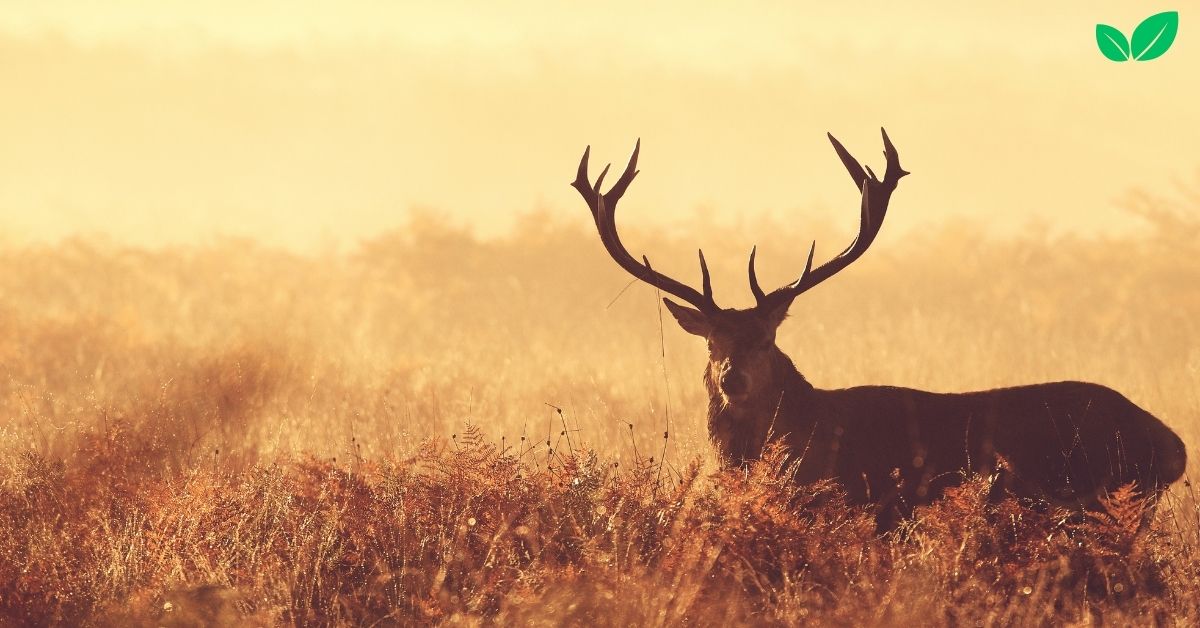Introduction to Stag Deer and Their Environmental Significance
Stag deer, often referred to as male deer of various species, are some of the most iconic animals in forest ecosystems worldwide. With their impressive antlers, stag deer play a crucial role in maintaining ecological balance, supporting biodiversity, and shaping their habitats. Stags, like other deer, are herbivores that graze on a variety of plants, shrubs, and grasses, impacting vegetation structure and composition through selective feeding. Beyond their role as herbivores, stag deer contribute to nutrient cycling, provide food for predators, and influence forest dynamics and plant diversity.
Understanding the environmental niche of stag deer requires an examination of their preferred habitats, diet, and interactions with other species. Their behaviors, such as seasonal migrations, grazing patterns, and reproductive rituals, all contribute to the balance and health of ecosystems. As we explore the ecological significance of stag deer, we can appreciate the broader impact these animals have on forest ecosystems, plant communities, and wildlife diversity.
Habitat Preferences and Adaptations of Stag Deer
Stag deer are found in diverse habitats, from dense forests and woodlands to grasslands, savannas, and even mountainous regions. Each deer species has unique habitat preferences shaped by factors such as vegetation type, climate, and predation pressures.
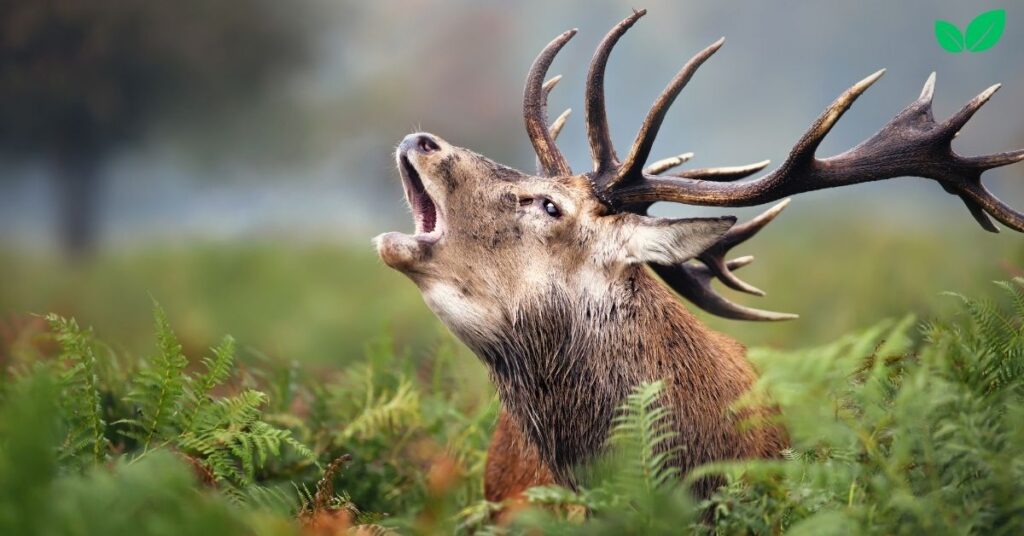
1. Distribution and Habitat Diversity
Stag deer inhabit a variety of ecosystems across North America, Europe, Asia, and Africa. Different deer species, including red deer, white-tailed deer, mule deer, and fallow deer, have distinct habitat preferences based on their evolutionary history and environmental adaptations.
- Temperate Forests: In regions with temperate forests, such as North America and Europe, stags are commonly associated with deciduous and mixed woodlands, where they find ample forage in the form of leaves, grasses, shrubs, and acorns. Red deer (Cervus elaphus), for example, are well adapted to these forests and are particularly abundant in European woodlands.
- Grasslands and Savannas: Some species, like the white-tailed deer (Odocoileus virginianus) and mule deer (Odocoileus hemionus), are well adapted to grasslands and savannas, where they graze on grasses, herbs, and shrubs. These open habitats allow for greater mobility, enabling stags to migrate as necessary in search of food and water, especially during dry seasons.
- Montane and Boreal Forests: In mountainous regions, such as the Rockies and the Alps, deer species like the elk (also a member of the deer family) adapt to varying altitudes and temperatures. Stags in these areas feed on a range of vegetation, from grasses in lower elevations to shrubs and lichens at higher altitudes.
- Urban and Semi-Urban Areas: In recent years, stags have increasingly been spotted in urban and suburban areas, often due to habitat fragmentation and reduced hunting pressures. While these environments present new challenges, such as vehicle collisions and human-wildlife conflicts, stags’ adaptability has allowed them to thrive in semi-natural spaces.
The presence of stag deer in these various environments speaks to their adaptability, which has enabled them to occupy a broad ecological niche across different habitats. Their mobility and ability to navigate diverse landscapes allow them to play a pivotal role in shaping plant communities and supporting biodiversity.
2. Seasonal Migrations and Range
Many stag deer species exhibit seasonal migrations to optimize access to food and avoid harsh environmental conditions. For instance, red deer and elk migrate to higher altitudes during summer months, taking advantage of newly sprouted vegetation in mountain meadows. In winter, they return to lower elevations where temperatures are milder, and forage remains accessible under snow cover.
Migration patterns not only allow stags to survive seasonal changes but also influence plant communities across their ranges. By moving through different areas, stags help disperse seeds and contribute to nutrient cycling, enhancing the resilience and diversity of plant species in both their summer and winter ranges.
Migration also helps stags avoid areas with high predation risk or where resources are scarce. This mobility ensures that they play their role in different ecosystems, supporting biodiversity and contributing to the health of multiple habitats.
3. Antler Growth and the Role of Antlers in Stag Behavior
One of the defining characteristics of stags is their antlers, which they grow and shed annually. Antlers serve several purposes, including defense, display, and social hierarchy within deer populations. Antler growth is a highly energy-intensive process that requires significant nutritional intake, particularly of calcium and phosphorus. During the growing season, stags often increase their grazing to meet the nutritional demands for antler growth.
Antlers are primarily used during the rut, or mating season, when stags engage in sparring and displays of dominance to attract females. These behaviors have a significant impact on the social structure of deer populations, as only the strongest males secure mates, leading to healthier and more robust offspring. Antlers also provide an evolutionary advantage by enabling stags to defend themselves against predators or compete for territory and resources.
Antler shedding and regrowth contribute to the nutrient cycle, as the shed antlers decompose and return minerals to the soil. This process enhances soil fertility and supports the health of vegetation in areas frequented by deer populations.
Ecological Role of Stag Deer in Their Habitats
Stag deer play a variety of ecological roles within their environments, impacting vegetation structure, supporting biodiversity, and influencing nutrient cycling through their grazing and behaviors.
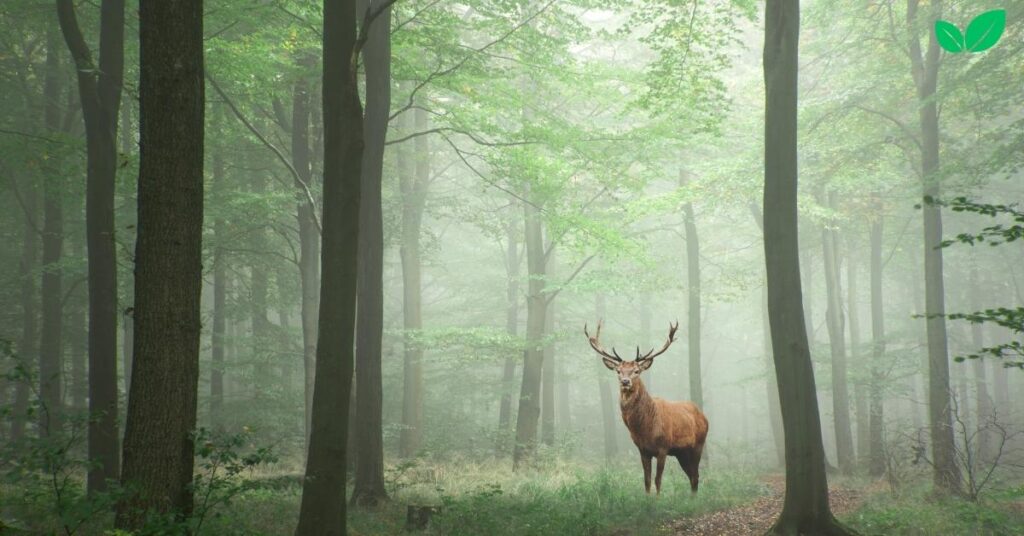
1. Herbivory and Plant Population Regulation
As herbivores, stag deer influence plant communities through selective grazing and browsing. Their feeding preferences shape the structure and composition of vegetation, as they consume grasses, herbs, shrubs, and young tree shoots. By targeting specific plants, stags create opportunities for other species to establish themselves, supporting a diverse range of flora within their habitats.
In forested environments, stags often graze on young saplings and understory plants, affecting tree regeneration and forest composition. For example, red deer in European forests can suppress the growth of tree species such as oak and beech by browsing on saplings, thereby influencing forest structure and age distribution. This browsing behavior can slow the growth of certain tree species, allowing other plants to thrive in the forest understory.
In grasslands, stag deer help maintain open areas by consuming grasses and other herbaceous plants. Their grazing patterns prevent certain plant species from dominating the landscape, promoting a more diverse plant community that can support a variety of wildlife. This balance between grazing and plant diversity is essential for the overall health of grassland ecosystems.
2. Seed Dispersal and Habitat Connectivity
Stag deer play a role in seed dispersal, facilitating the movement of plant species across different habitats. Seeds from the plants they consume often pass through their digestive systems intact and are deposited elsewhere in their droppings, spreading plant species across their range. This process is especially important in maintaining habitat connectivity and supporting plant regeneration in fragmented landscapes.
The droppings of stag deer also act as nutrient-rich fertilizer, benefiting plants and soil organisms. This process supports plant diversity and promotes the growth of new vegetation, which in turn provides food and shelter for a wide range of animals.
By dispersing seeds and contributing to soil enrichment, stag deer support ecological resilience, enabling plant species to colonize new areas and adapt to changing environmental conditions.
3. Supporting Biodiversity and Wildlife Communities
Stag deer contribute to ecosystem biodiversity by providing food for a variety of predators and scavengers. As large herbivores, they form an essential part of the food web, supporting carnivores such as wolves, mountain lions, and bears. Predators often target young, old, or weakened stags, maintaining a balanced deer population and supporting natural selection within the species.
In addition to live predators, scavengers like foxes, coyotes, and birds of prey benefit from deer carcasses. The remains of a stag, whether left by a predator or dying naturally, provide sustenance for various species, promoting a nutrient-rich environment that supports a diverse community of animals, fungi, and bacteria involved in decomposition.
By maintaining balanced populations, stag deer help regulate the density of other herbivores and reduce competition for food. Their presence contributes to a healthy and diverse wildlife community within their habitats, supporting species that rely on them for sustenance and habitat structure.
Adaptive Behaviors and Survival Strategies of Stag Deer
Stag deer have evolved a range of behaviors and adaptations that allow them to navigate complex environments, avoid predation, and reproduce successfully. These strategies support their survival and contribute to their role within the ecosystem.
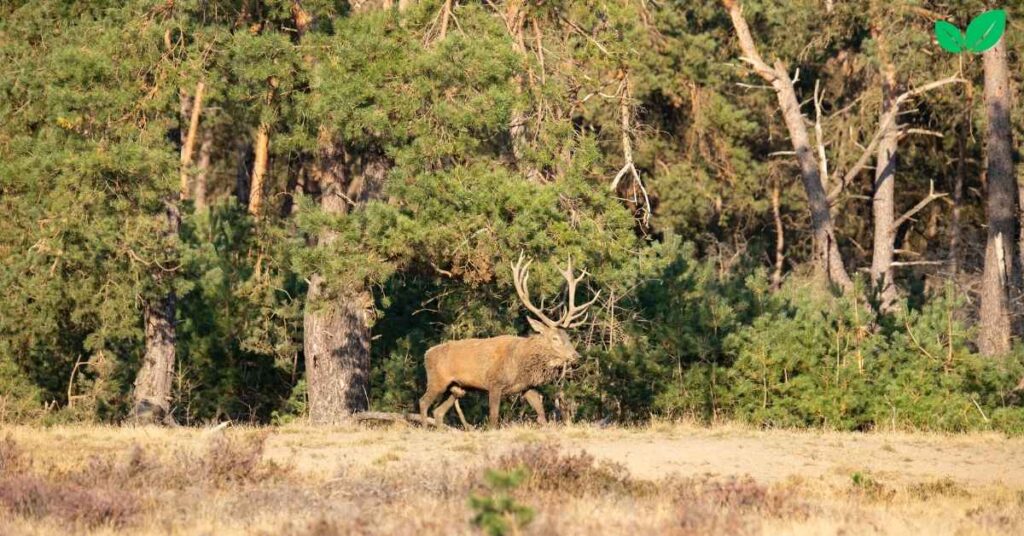
1. Social Structure and Mating Rituals
During the rut or breeding season, stags engage in highly competitive behaviors to establish dominance and attract mates. These behaviors include vocalizations (roaring or bellowing), antler displays, and physical sparring. By asserting dominance, stronger stags gain access to mates, ensuring that only the most robust genetics are passed to the next generation.
The seasonal gathering of stags during the rut has an ecological impact, as their collective movements and behaviors create temporary pathways, clearings, and disturbance areas within the vegetation. These activities promote soil turnover and seed dispersion, inadvertently supporting the growth of various plant species and enhancing ecosystem diversity.
2. Seasonal Feeding Patterns and Diet Flexibility
Stag deer exhibit diet flexibility, allowing them to adapt to seasonal variations in food availability. In spring and summer, they consume nutrient-rich plants, grasses, and leaves, which provide the necessary energy for antler growth and body condition. As fall approaches, they shift to a diet of acorns, nuts, and other high-energy foods to build fat reserves for the winter months.
During winter, when vegetation is scarce, stags rely on woody browse, including twigs, buds, and bark, to meet their nutritional needs. This seasonal diet flexibility enables stags to survive in diverse environments and periods of scarcity, allowing them to continue their ecological role as herbivores year-round.
3. Vigilance and Predator Avoidance
Stag deer are highly vigilant animals, with keen senses of sight, smell, and hearing that help them detect predators. Their alertness and agility allow them to evade predation, particularly in open habitats where they can spot potential threats from a distance. This vigilance is especially important during the rut, when stags are more vulnerable due to their focus on mating and competition.
By avoiding predation, stags maintain stable populations, supporting their ecological role as keystone herbivores. Their presence and survival enable them to continue shaping vegetation, contributing to seed dispersal, and supporting biodiversity within their habitats.
Conservation and Ecological Importance of Stag Deer
Stag deer face numerous threats from habitat loss, hunting, and human-wildlife conflicts. Conservation efforts are crucial for preserving deer populations and ensuring they can continue to fulfill their ecological roles in natural and managed ecosystems.
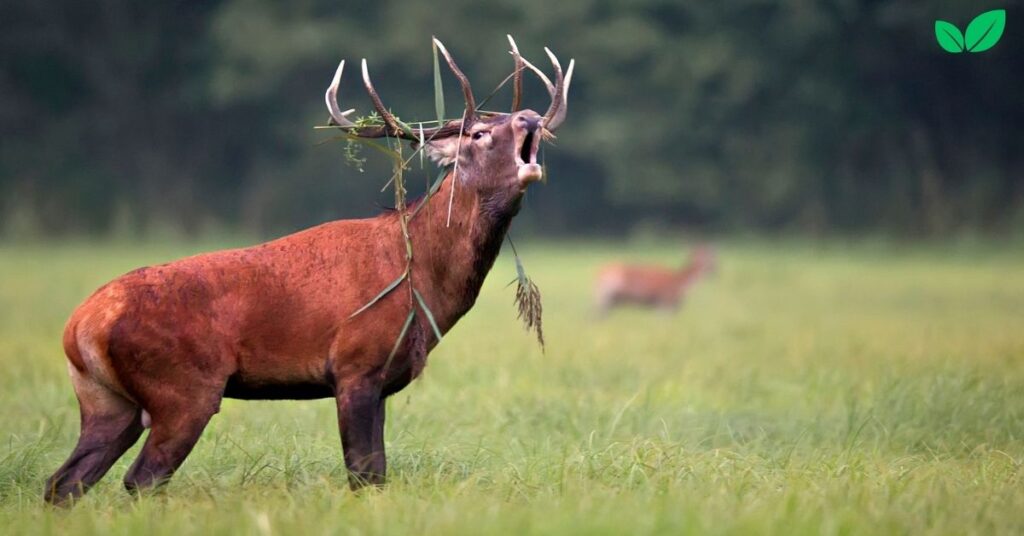
1. Habitat Conservation and Management
The preservation of forests, grasslands, and open spaces is essential for supporting deer populations. Habitat loss due to urbanization, agriculture, and infrastructure development reduces the availability of food, shelter, and migration corridors for stag deer. Conservation efforts that focus on habitat restoration, reforestation, and the establishment of wildlife corridors help maintain the landscapes that support deer and other wildlife.
In managed landscapes, such as national parks and nature reserves, habitat management practices can support deer populations while minimizing conflicts with human activities. Sustainable forest management, controlled burns, and vegetation control all contribute to creating diverse and resilient habitats where stag deer can thrive.
2. Regulated Hunting and Population Control
In regions where deer populations are high, regulated hunting can help control numbers, reduce overgrazing, and prevent habitat degradation. Overpopulation can lead to issues such as soil erosion, reduced plant diversity, and competition with livestock. Sustainable hunting practices, guided by scientific data and population monitoring, help maintain balanced deer populations and minimize negative impacts on ecosystems.
Regulated hunting also generates funding for conservation programs, supporting efforts to protect habitats and manage wildlife populations sustainably.
3. Human-Wildlife Conflict Mitigation
Stag deer often venture into human-populated areas, leading to conflicts, including vehicle collisions and crop damage. Efforts to mitigate these conflicts are important for deer conservation and community coexistence. Wildlife corridors, fencing, and controlled urban planning can reduce interactions between deer and human settlements, providing safer environments for both.
Education programs that promote awareness of deer behavior and conservation importance can foster greater tolerance and understanding, contributing to successful conservation outcomes.
Conclusion: The Environmental Legacy of Stag Deer
Stag deer are more than iconic forest inhabitants; they are integral to ecosystem health, supporting biodiversity, regulating plant populations, and contributing to nutrient cycling. By understanding and conserving stag deer and their habitats, we ensure the preservation of the complex ecological interactions that these animals support. As we face challenges such as habitat loss and climate change, recognizing the importance of species like stag deer is essential for fostering resilient and balanced ecosystems, securing a future where biodiversity can thrive.
Read More: The Environmental Niche of Axis Buck: Understanding the Role of Axis Deer in Ecosystems

